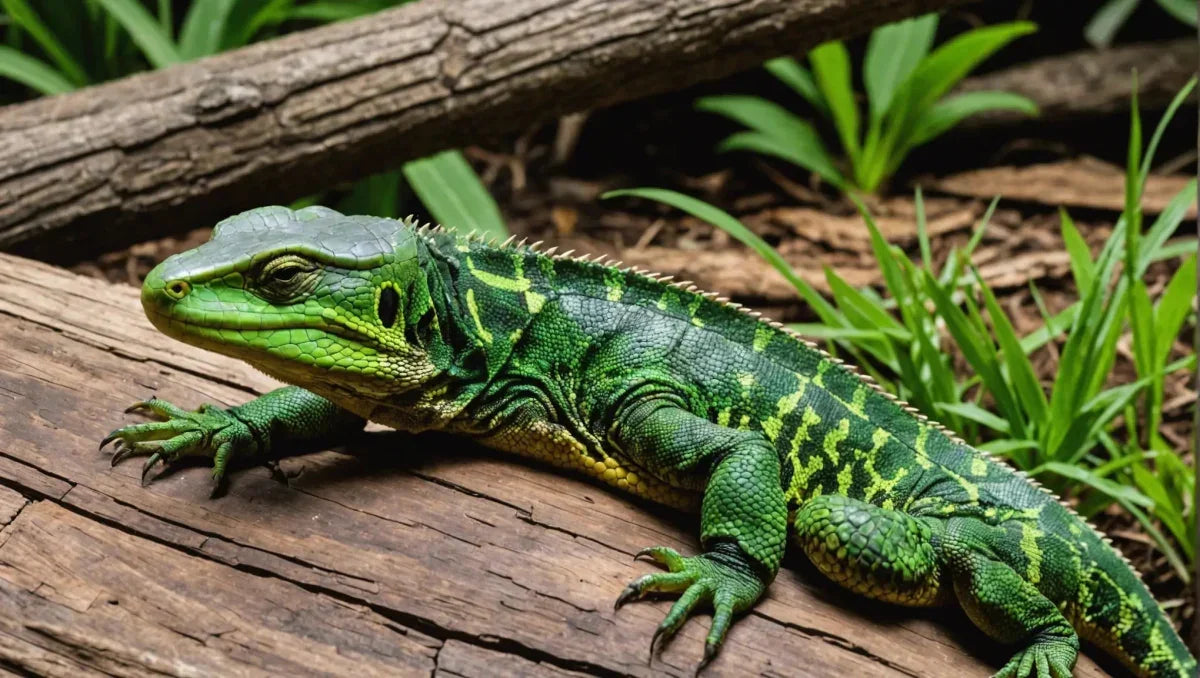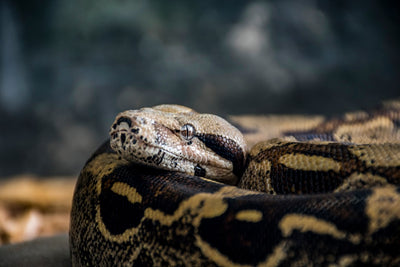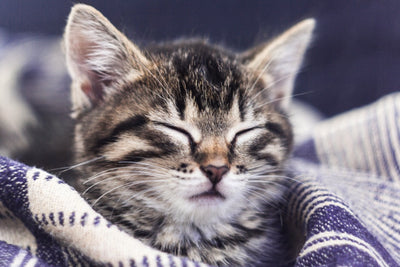Step into the fascinating realm of reptile care where environmental elements play a crucial role in the well-being of your scaly companions. Providing a designated area for your reptile to bask under heat and UV rays is a fundamental aspect of creating a habitat that mirrors their natural environment. By understanding the significance of this specific zone, you are not only nurturing their health but also enhancing their quality of life. Whether you share your space with a bearded dragon, a turtle, or a snake, ensuring a proper basking spot is essential for their thermoregulation and overall vitality. Join us as we explore the importance, setup, and maintenance of this key feature that contributes to the happiness and thriving existence of your reptilian friends.

Creating the Perfect Basking Spot for Your Reptile
Creating the perfect basking spot for your reptile is crucial for their overall well-being and contentment. Understanding the essential characteristics that define an ideal basking spot is key to providing a suitable environment for your scaly companion. Let's delve deeper into the key attributes that make up an optimal basking spot:.
Temperature Requirements
Reptiles, being ectothermic creatures, rely on external heat sources to maintain their body temperature. The basking spot should offer a diverse temperature range, allowing your reptile to self-regulate by moving between warmer and cooler zones. Research the specific temperature needs of your reptile species to ensure the basking area is adequately heated, mimicking their natural habitat. Monitoring the temperature with a reliable thermometer is essential to prevent overheating or chilling.
UVB Light Exposure
Apart from warmth, reptiles necessitate UVB light for essential physiological processes such as calcium absorption and vitamin D synthesis. It is imperative to equip the basking spot with a UVB light source, but remember to position it at an appropriate distance to provide beneficial exposure without causing harm. Understanding the UVB requirements of your reptile species is crucial to prevent issues like metabolic bone disease. Regularly replacing UVB bulbs to maintain efficiency is vital for your reptile's health.
Safety and Comfort
Prioritizing safety and comfort in the basking spot is paramount for your reptile's well-being. Opt for non-toxic materials when decorating the area or selecting substrates to prevent accidental ingestion, which could lead to health complications. Ensure that the basking area is easily accessible and free from any potential hazards that may cause stress or injury to your pet. Enhance the comfort of the spot by incorporating hiding spots, natural foliage, or basking platforms to create a secure and enriching environment.
By incorporating these fundamental characteristics into your reptile's basking spot, you can foster a habitat that not only meets their physical needs but also promotes their mental and emotional health. Remember to observe your reptile's behavior and make adjustments as needed to ensure their ongoing comfort and happiness.
Creating the Perfect Basking Spot
The basking spot is a crucial element in any reptile or amphibian enclosure, as it provides a specific area where your cold-blooded pet can regulate its body temperature effectively. Here's how you can create the perfect basking spot for your scaly friend.
Location and Placement
- Choose a spot in the enclosure that receives direct sunlight or use a basking light to simulate natural sunlight. Reptiles and amphibians rely on external heat sources to regulate their body temperature, making the location of the basking spot vital for their well-being. Ensure that the spot is not obstructed by any decor or obstacles that could prevent your pet from accessing it easily.
- Ensure that the basking spot is elevated and closer to the heat source, allowing your pet easy access. A basking spot that is too far away from the heat source may not provide the necessary warmth for your cold-blooded companion.
Materials Needed
- Basking platform or rock: Provide a flat, sturdy surface for your pet to bask on. Natural rocks or commercially available basking platforms can be used to create a comfortable and safe basking area for your reptile or amphibian.
- Heat source: Use a heat lamp or a heat mat to create the ideal temperature in the basking spot. Different species have specific temperature requirements, so it's essential to research and provide the appropriate heat source for your pet.
- Thermometer: Always monitor the temperature to prevent overheating or chilling. Place a thermometer in the basking spot to ensure that the temperature remains within the recommended range for your pet's species.
Maintenance Tips
- Regularly clean the basking spot to prevent the buildup of bacteria or mold. Remove any feces, shed skin, or uneaten food to maintain a hygienic basking area for your pet.
- Check the temperature settings and adjust as needed to maintain the optimal basking conditions. Environmental factors such as weather changes can affect the temperature in the enclosure, so regularly monitor and adjust the heat source to meet your pet's needs.
- Observe your pet's behavior to ensure that they are using the basking spot regularly. Some reptiles and amphibians may prefer specific basking temperatures or locations, so monitoring their behavior can help you make adjustments for their comfort.
By following these guidelines and creating a comfortable basking spot, you can ensure that your reptile or amphibian thrives in its environment. Remember, providing the perfect basking spot is essential for the overall well-being of your cold-blooded companion. Investing time and effort into setting up an ideal basking spot will contribute to your pet's health and happiness.
Popular Basking Spot Options
Creating an ideal basking spot for your pet reptile is essential for their overall well-being. Let's explore some popular options to consider when setting up the perfect basking area.
Basking Platforms: The Importance of Elevated Surfaces
Basking platforms serve as a crucial component of your reptile's habitat by providing a raised area for them to bask under the heat source. These platforms can be crafted from various materials such as natural rocks, sturdy branches, or specialized reptile basking platforms. When selecting or designing a basking platform, ensure it is stable enough to support your pet's weight and positioned at the correct distance from the heat source to prevent overheating.
Heat Lamps and UVB Lights: Essential Components for Reptile Health
Heat lamps play a vital role in maintaining the necessary warmth for reptiles to regulate their body temperature effectively. Additionally, UVB lights are equally important as they aid in calcium metabolism and help prevent conditions like metabolic bone disease. It is imperative to incorporate both a heat lamp and a UVB light in the basking area to simulate natural sunlight conditions accurately.
Natural Sunlight vs Artificial Light: Striking a Balance
While artificial light sources like heat lamps and UVB lights are indispensable for indoor enclosures, the benefits of natural sunlight should not be overlooked. Whenever feasible, allow your reptile supervised access to direct sunlight outdoors. Natural sunlight offers a full spectrum of light that artificial sources cannot replicate entirely, contributing to your pet's overall health and vitality.
Additional Considerations for Optimal Basking Areas
In addition to basking platforms and lighting sources, it's vital to provide hiding spots and sufficient moisture in the basking area to create a comfortable and secure environment for your reptile. Regularly monitor the temperature gradients within the basking spot to ensure they align with your pet's specific needs.
Selecting the right basking spot options tailored to your pet reptile's species and requirements is pivotal in fostering their health and happiness. By establishing a well-equipped basking area with appropriate heat, lighting, and environmental conditions, you can support your reptile in thriving within their habitat.
Ensuring Your Reptile's Well-being
Monitoring Basking Behavior
One crucial aspect of ensuring the well-being of your reptile is to closely monitor its basking behavior. Basking is not just a way for your reptile to soak up heat; it is essential for regulating body temperature, aiding in digestion, and overall metabolic function. When observing your reptile, take note of how frequently it basks, the duration of each basking session, and any changes in this behavior, as it can indicate underlying health issues or stress. Ensure that your reptile has access to a proper basking area with the right temperature gradient and suitable substrate for comfortable lounging.
Consulting a Vet
Regular check-ups with a qualified reptile veterinarian are paramount in maintaining your pet's health and well-being. Vets specializing in reptiles can offer valuable insights into your specific species' needs, provide preventive care advice tailored to your reptile's requirements, and promptly address any health concerns that may arise. Establishing a good relationship with a reptile vet ensures that your pet receives the best care possible throughout its life.
Common Mistakes to Avoid
- Inadequate Housing: Your reptile's enclosure should mimic its natural habitat as closely as possible. Ensure that the enclosure size, temperature, humidity levels, lighting, and hiding spots are all appropriate for your reptile's species.
- Poor Nutrition: A well-balanced diet is crucial for your reptile's overall health. Research your pet's dietary requirements and provide a variety of food items to meet its nutritional needs. Vitamin and mineral supplements may also be necessary, depending on your reptile's species.
- Ignoring Behavioral Changes: Pay close attention to your reptile's behavior as any sudden changes could indicate an underlying health issue or environmental stress. Signs of distress, lethargy, changes in appetite, or abnormal posture should prompt a visit to the vet for further evaluation.
Creating a Stimulating Environment
It's essential to provide your reptile with an enriching environment that stimulates their natural behaviors. Incorporate climbing structures, hiding places, and varied substrates to encourage physical activity and mental stimulation. Different reptile species have unique habitat preferences, so research your pet's specific needs to create a setup that promotes their well-being.
Temperature and Humidity Regulation
Maintaining proper temperature and humidity levels in your reptile's enclosure is vital for their health. Use thermometers and hygrometers to monitor these parameters regularly. Ensure there are thermal gradients within the habitat to allow your pet to regulate its body temperature effectively. Consult species-specific guidelines to provide the ideal thermal and humidity conditions for your reptile.
Handling and Interaction
While some reptiles tolerate handling well, others may find it stressful. Always approach your pet calmly and support their body properly to minimize stress during handling. Limit handling sessions to prevent unnecessary anxiety and allow your reptile to retreat to their hiding spots when they desire solitude. Respect your pet's boundaries and observe their behavior cues to ensure positive interactions.
By following these comprehensive guidelines, you can provide your reptile with optimal care, ensuring their well-being, happiness, and longevity.
Conclusion
Creating a suitable basking spot for reptiles is crucial for their overall health and well-being. By providing the right temperature, lighting, and substrate, reptile owners can ensure that their pets have a comfortable and stimulating environment. Proper basking spots help regulate the reptiles' body temperature, aid in digestion, and support their natural behaviors. Investing time and effort into setting up a basking spot tailored to the specific needs of the reptile species can lead to happier, healthier pets and a more fulfilling ownership experience.






